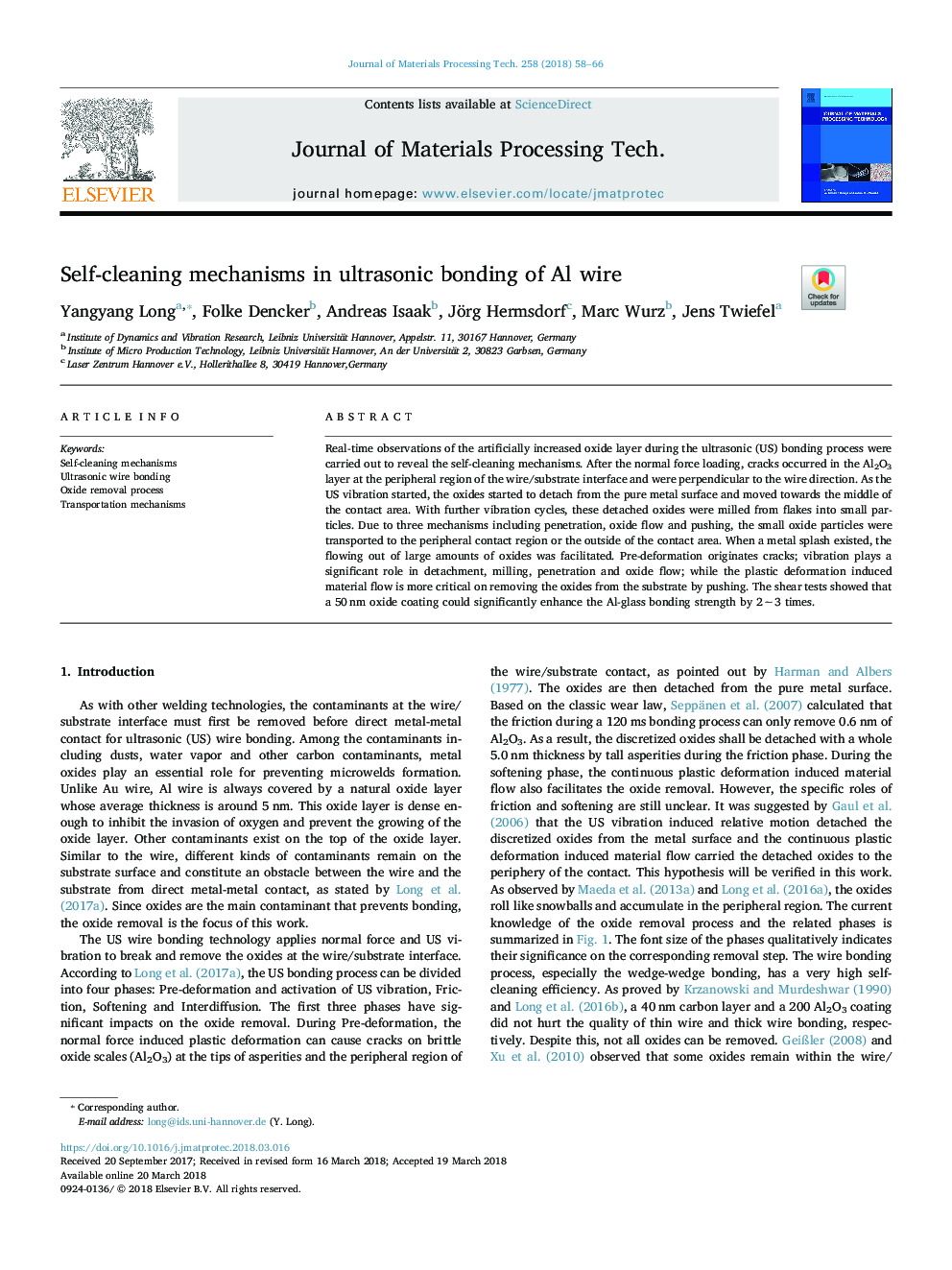| Article ID | Journal | Published Year | Pages | File Type |
|---|---|---|---|---|
| 7176324 | Journal of Materials Processing Technology | 2018 | 9 Pages |
Abstract
Real-time observations of the artificially increased oxide layer during the ultrasonic (US) bonding process were carried out to reveal the self-cleaning mechanisms. After the normal force loading, cracks occurred in the Al2O3 layer at the peripheral region of the wire/substrate interface and were perpendicular to the wire direction. As the US vibration started, the oxides started to detach from the pure metal surface and moved towards the middle of the contact area. With further vibration cycles, these detached oxides were milled from flakes into small particles. Due to three mechanisms including penetration, oxide flow and pushing, the small oxide particles were transported to the peripheral contact region or the outside of the contact area. When a metal splash existed, the flowing out of large amounts of oxides was facilitated. Pre-deformation originates cracks; vibration plays a significant role in detachment, milling, penetration and oxide flow; while the plastic deformation induced material flow is more critical on removing the oxides from the substrate by pushing. The shear tests showed that a 50â¯nm oxide coating could significantly enhance the Al-glass bonding strength by 2â¼3 times.
Keywords
Related Topics
Physical Sciences and Engineering
Engineering
Industrial and Manufacturing Engineering
Authors
Yangyang Long, Folke Dencker, Andreas Isaak, Jörg Hermsdorf, Marc Wurz, Jens Twiefel,
